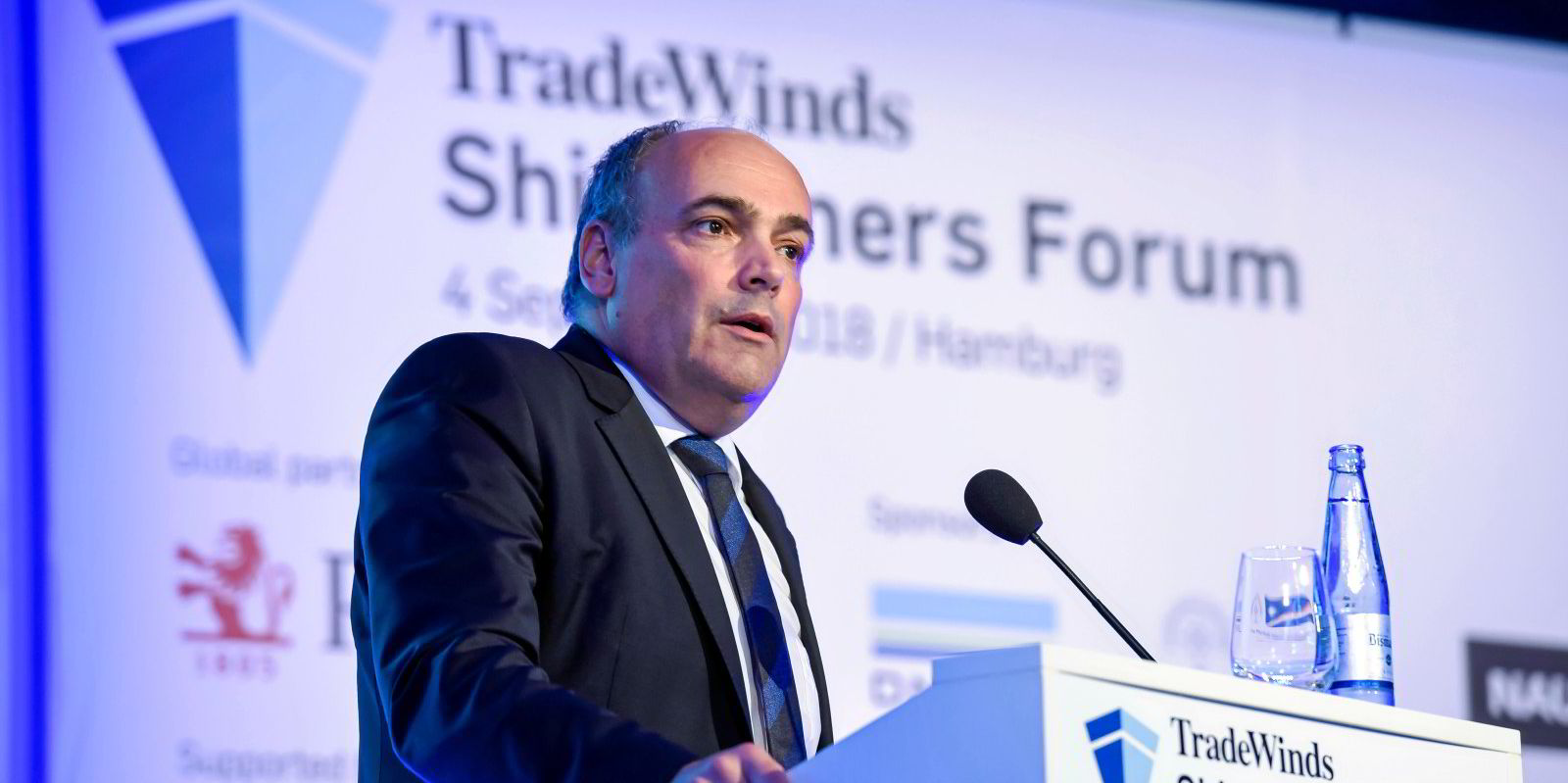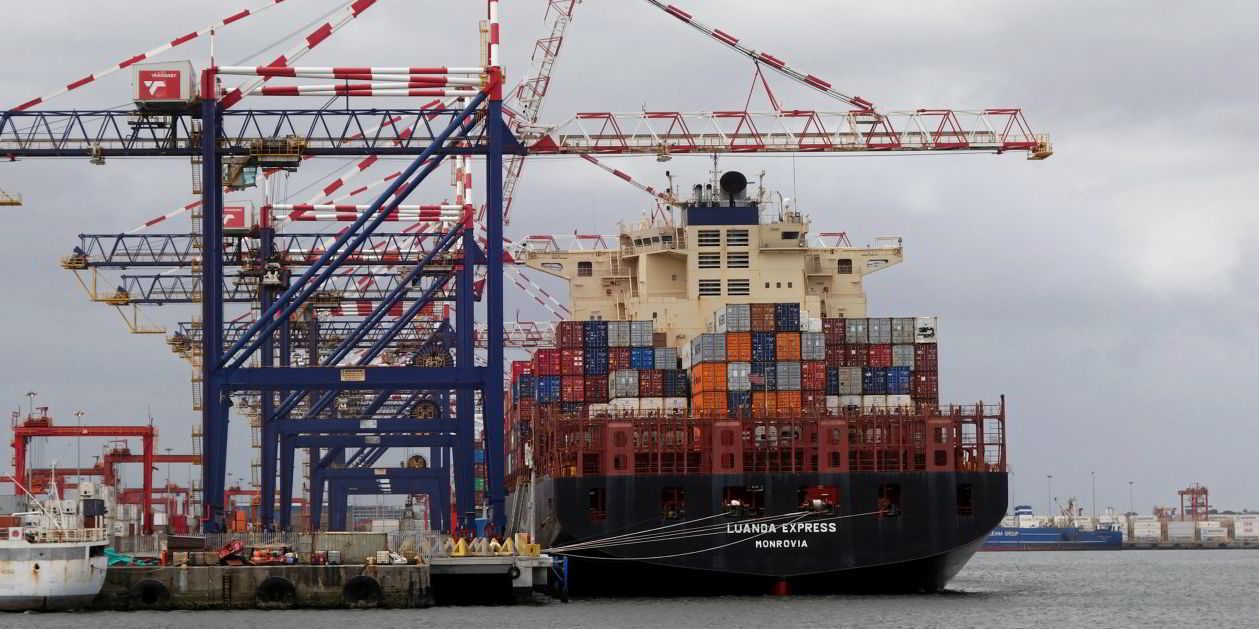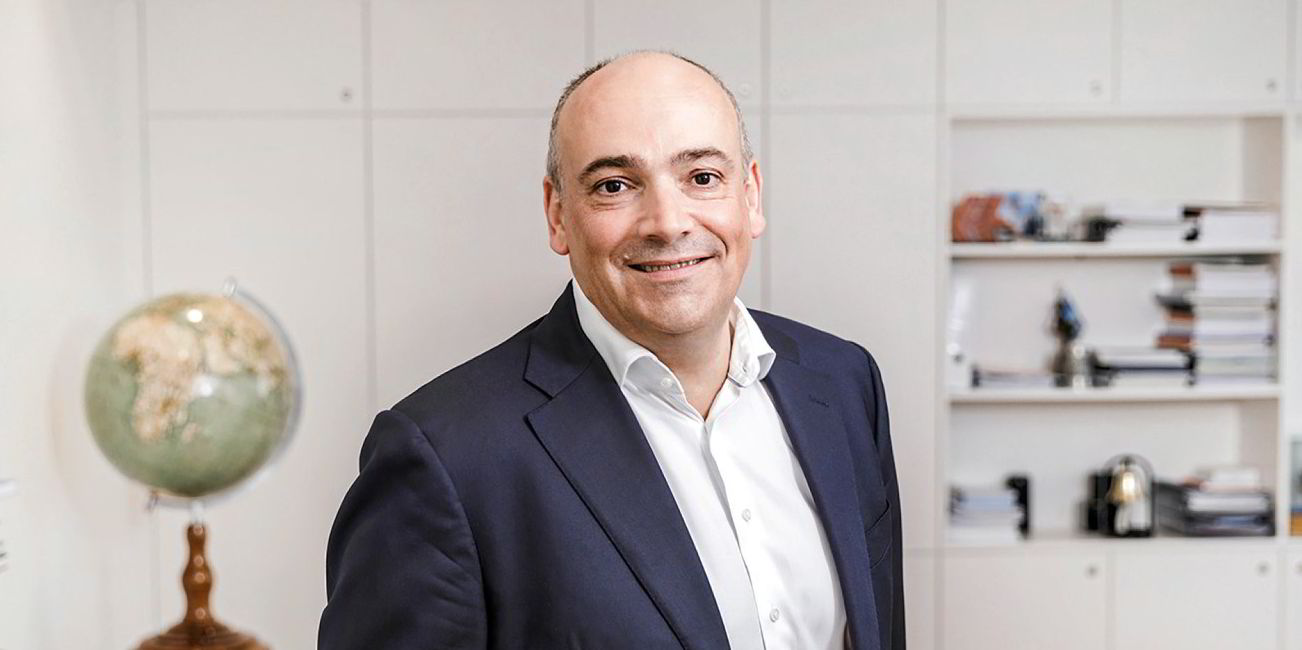Germany’s Hapag-Lloyd saw profits and revenues halved in the first quarter as the weaker container market beds in.
Group profit fell to $2.02bn in the first three months of the year, down from $4.6bn in the same period last year.
Revenues dropped to $6bn, a drop of $2.92bn on the same quarter a year ago.
The Hamburg-based carrier blamed the weakening of global demand which continued in the first quarter of this year.
“The market environment has normalised, with corresponding declines in demand and freight rates,” said chief executive Rolf Habben Jansen.
“This will undoubtedly have an impact on our earnings over the course of the year, so we will be keeping a very close eye on our costs.”
Volumes were 4.9% lower than in the same period last year at 2.84m teu.
Average freight rates were significantly lower at $1,999 per teu, down $775 from the previous year.
The company was also hit by inflation-related cost increases including higher bunker consumption prices.
Transport expenses were on par with the same period last year at $3.3bn.
Ebita for the quarter dropped to $2.4bn, down $2.9bn from the same quarter last year.
Ebit dropped from $4.8bn in 2022 to $1.8bn in the first three months of this year.
Guidance
For the full year, the company is sticking by its earnings guidance issued on 2 March, despite uncertainties that could negatively impact the forecast.
The liner giant expects Ebitda to fall to between $4.3bn to 6.5bn this year — down massively from $20.5bn in 2022.
Ebit is expected to be in the range of $2.1bn to 4.3bn — compared with $18.5bn in the 2022 financial year.
The results mark a sharp turnaround from last year. Hapag-Lloyd made a group profit of $18bn in 2022 on revenues of $36.5bn.
That enabled the company to pay $11.8bn in dividends.
The world’s fifth largest liner operator operates 250 container ships of 1.81m teu, of which two-thirds are owned.
The company has orders of a dozen newbuildings of 23,660 teu and two 13,000-teu vessels with deliveries this year through to 2025.
These will be joined by three 13,000-teu vessels taken on long-term charter with deliveries slated this year and in 2024.





